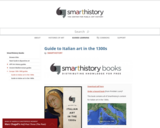
This book contains all of Smarthistory’s content for Italian art in the 1300s.
- Subject:
- Art History
- Arts and Humanities
- Visual Arts
- Material Type:
- Reading
- Provider:
- Smarthistory
- Author:
- SmartHistory
- Date Added:
- 11/18/2021

This book contains all of Smarthistory’s content for Italian art in the 1300s.
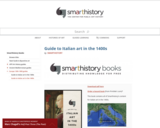
This book contains all of Smarthistory’s content for Italian art in the 1400s.
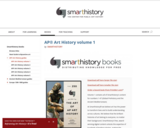
Volume 1 contains all of Smarthistory’s content for numbers 1-47 (Global Prehistory and the Ancient Mediterranean) Reviewer’s note: It is unfortunate that this textbook is branded as AP, as the level is appropriate for college learners, but the label might be off-putting. (Hopefully the forthcoming Reframing Art History will solve this problem.) Volume 1 covers material from the Paleolithic through Late Antiquity; to get through the Gothic period, instructors would need to add Smarthistory Guide to AP® Art History, Volume 2 (Early Europe, Colonial Americas), which picks up where Volume 1 leaves off and extends through Hogarth’s Marriage a la Mode. For C-ID ARTH 120
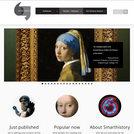
smARThistory.org is a free multi-media web-book designed as a dynamic enhancement (or even substitute) for the traditional and static art history textbook.
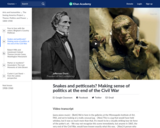
This ceramic jug uses satire to poke fun at the defeated Confederacy. Anna Pottery, Snake Jug, c. 1865, stoneware with painted decoration, 31.75 x 21.11 x 22.07 cm (Minneapolis Institute of Art) A Seeing America video Speakers: Dr. Alex Bortolot and Dr. Beth Harris. Created by Beth Harris and Steven Zucker. Find learning related resources here: https://smarthistory.org/seeing-america-2/
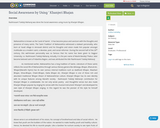
Rashtrasant Tukdoji Maharaj was done the Social awareness using music by Khanjeri Bhajan.

This collection uses primary sources to explore social realism in American art. Digital Public Library of America Primary Source Sets are designed to help students develop their critical thinking skills and draw diverse material from libraries, archives, and museums across the United States. Each set includes an overview, ten to fifteen primary sources, links to related resources, and a teaching guide. These sets were created and reviewed by the teachers on the DPLA's Education Advisory Committee.

This OER is a Pacific Northwest remix of the Digital Public Library of America's Primary Source Set on the social realism art movement in America during the Great Depression. The content has been updated to include content from Northwest artists and to focus on themes specific to the region. SEE the original OER record here: https://oercommons.org/courses/social-realism. Original OER author: Amy Rudersdorf, DPLA.The Digital Public Library of America Primary Source Sets are designed to help students develop their critical thinking skills and draw diverse material from libraries, archives, and museums across the United States. Each set includes an overview, ten to fifteen primary sources, links to related resources, and a teaching guide. These sets were created and reviewed by the teachers on the DPLA's Education Advisory Committee.
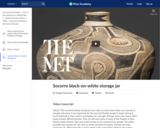
Ancestral Pueblo, Socorro black-on-white storage jar, c. 1050–100, clay and pigment, made in New Mexico, United States, 38.1 × 43.2 cm (The Metropolitan Museum of Art); speaker: Brian Vallo, Director, Indian Arts Research Center School for Advanced Research, Santa Fe, New Mexico. Created by The Metropolitan Museum of Art.
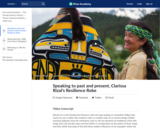
This prestigious garment follows a traditional design passed down through generations of indigenous Alaskans. Clarissa Rizal, Resilience Robe, 2014, merino wool, 64 x 53 inches (Portland Art Museum). Speakers: Lily Hope and Beth Harris. Created by Beth Harris and Steven Zucker. Find learning related resources here: https://smarthistory.org/seeing-america-2/
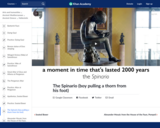
Spinario (Boy with Thorn), c. 1st century B.C.E., bronze, 73 cm high (Capitoline Museums, Rome), a conversation with Dr. Steven Zucker and Dr. Beth Harris. Created by Beth Harris, Smarthistory, and Steven Zucker.
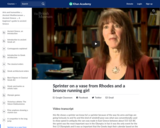
The greatest Olympic runner of all was Leonidas of Rhodes who won all three running events at each of the four successive Olympiads between 164 and 152 BC. Women competed in foot races at Olympia, but these were not part of the Olympic Games. © Trustees of the British Museum.
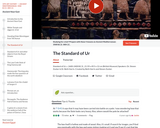
This art history video discussion examines the "Standard of Ur", c. 2600-2400 B.C.E. (British Museum).

Standard of Ur, c. 2600-2400 B.C.E., 21.59 x 49.5 x 12 cm (British Museum) Speakers: Dr. Steven Zucker & Dr. Beth Harris. Created by Beth Harris and Steven Zucker.
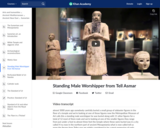
Standing Male Worshipper (votive figure), c. 2900-2600 B.C.E., from the Square Temple at Eshnunna (modern Tell Asmar, Iraq), Sumerian, Early Dynastic I-II, gypsum alabaster, shell, black limestone, bitumen, 11 5/8 x 5 1/8 x 3 7/8 inches / 29.5 x 10 cm (The Metropolitan Museum of Art). Speakers: Dr. Steven Zucker and Dr. Beth Harris. Created by Beth Harris and Steven Zucker.
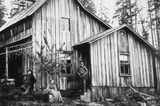
Washington’s long journey to become a state was a complex story culturally, economically, politically, environmentally, and ecologically.This is the teacher guide companion to The State We're In: Washington (Grade 3-5 Edition) Chapter 4. The resource is designed to engage students with a launch activity, focused notes, and a focused inquiry.
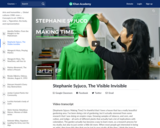
Video by Art21. At work in her Berkeley studio, Stephanie Syjuco navigates the deeply embedded visual tropes of American history applied in her practice. Describing the shift in priorities associated with progressing in a career as an artist, Syjuco notes a correlation in time spent between project management and art making. "My reality is," she says, "it's a lot more paperwork than I wish it were." To center herself, Syjuco spends time in her garden, harvesting vegetables and "empire crops"—such as tobacco, corn, cotton, and indigo—as part of her research into colonialism and the writing of American history. Stephanie Syjuco was born in Manila, Philippines, in 1974. Syjuco works in photography, sculpture, and installation, moving from handmade and craft-inspired mediums to digital editing. Her work explores the tension between the authentic and the counterfeit, challenging deep-seated assumptions about history, race, and labor. Learn more about the artist at: https://art21.org/artist/stephanie-syjuco/
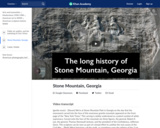
Confederate Memorial, Stone Mountain, Georgia (sculptors: Gutzon Borglum, Augustus Lukeman, Julian Harris, Walter Hancock, and Roy Faulkner), completed in 1970 (corrected). A conversation with Dr. Steven Zucker and Dr. Beth Harris. Warning: this video contains images of racial violence. Created by Smarthistory.
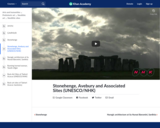
Stonehenge and Avebury, in Wiltshire, are among the most famous groups of megaliths in the world. The two sanctuaries consist of circles of menhirs arranged in a pattern whose astronomical significance is still being explored. These holy places and the nearby Neolithic sites are an incomparable testimony to prehistoric times. Source: UNESCO TV / © NHK Nippon Hoso Kyokai
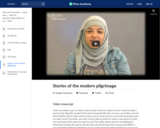
Every year, 25,000 British Muslims make the pilgrimage to Mecca. As part of the exhibition, Hajj: journey to the heart of Islam, the British Museum asked what this journey is like... ©Trustees of the British Museum.